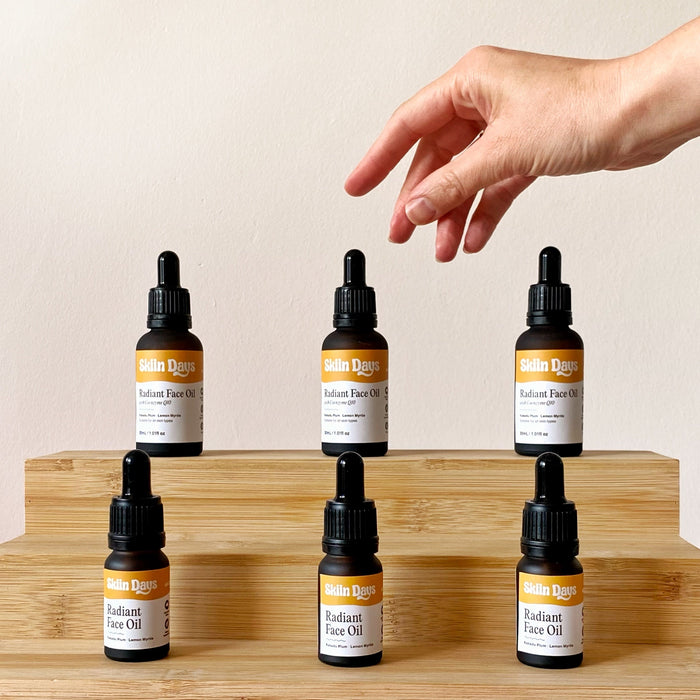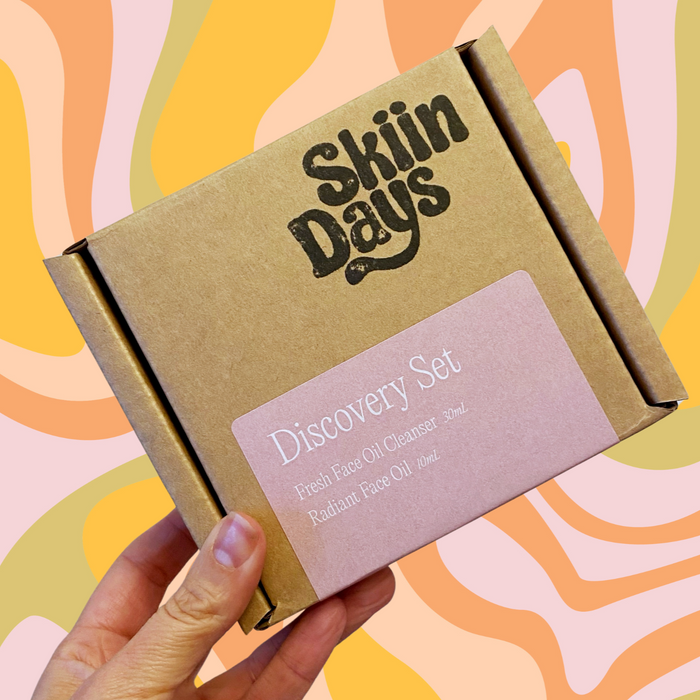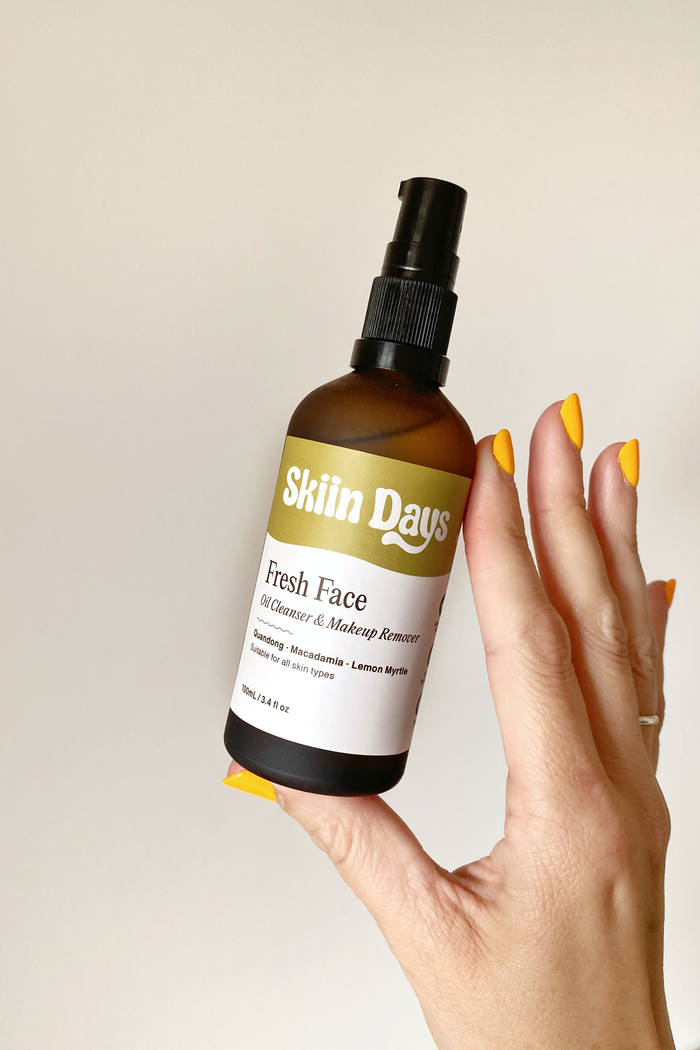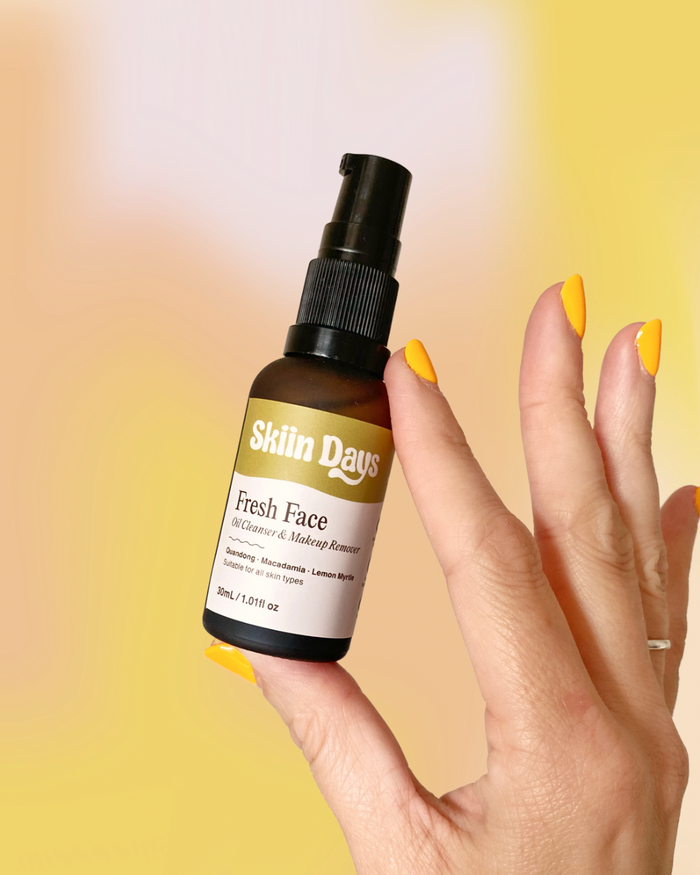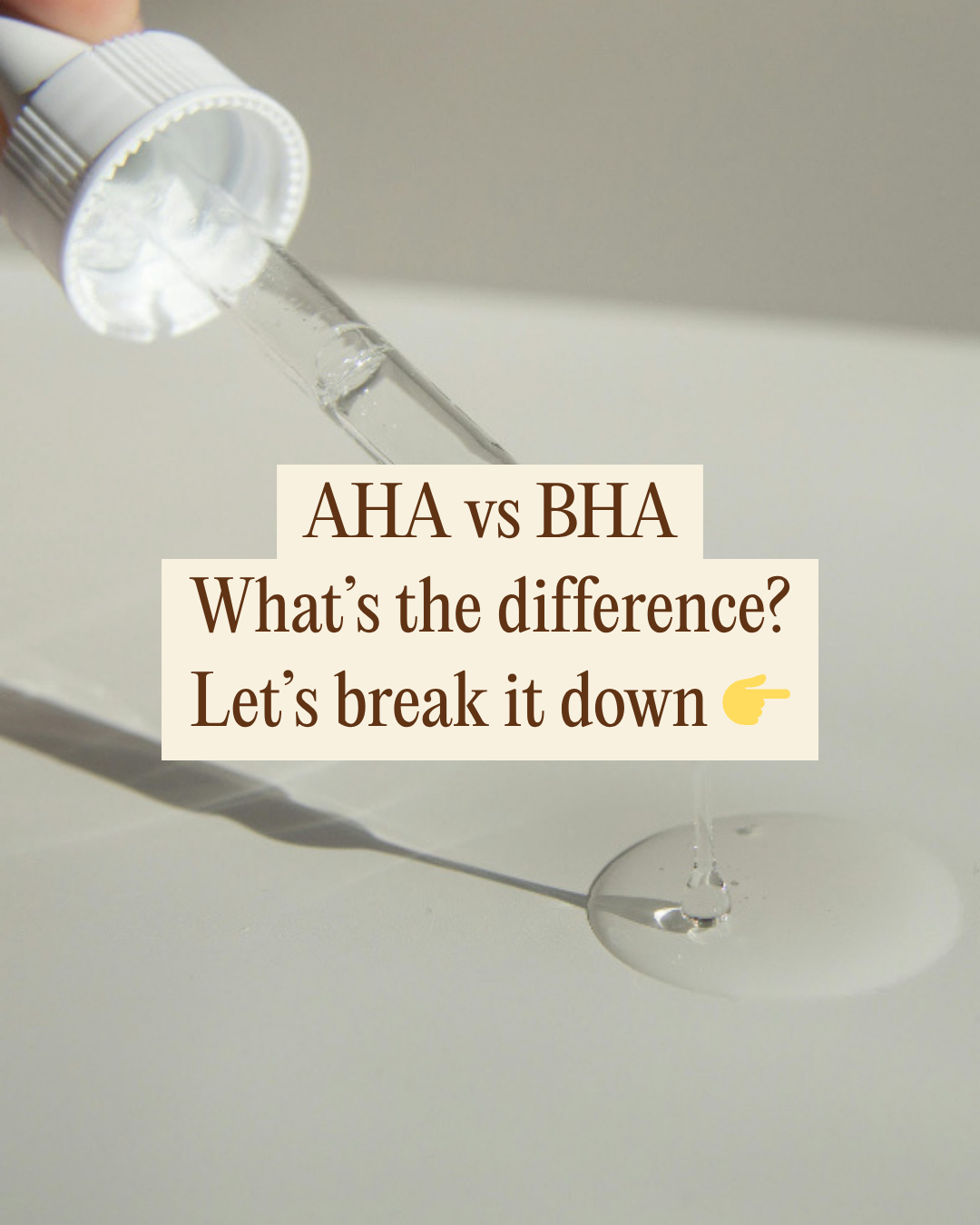

AHAs vs BHAs: What’s the Difference and Which One Should You Use?
If you’ve ever stood in front of a skincare shelf and wondered what on earth AHAs and BHAs are, you’re not alone. These chemical exfoliants are popular for their glow-boosting benefits, but they work in very different ways. Understanding how each one works - and whether it suits your skin - can make a huge difference.
What Are AHAs?

AHAs (Alpha Hydroxy Acids) are water-soluble acids made from sugary fruits or milk. They work by dissolving the bonds that hold dull, dead skin cells on the surface. This helps reveal smoother, more even-toned skin underneath.
Benefits of AHAs:
- Smoother texture
- Brighter complexion
- Faded sun damage or pigmentation
- Reduced appearance of fine lines over time
Popular Types:
- Glycolic Acid: The strongest and most effective (but also the most likely to irritate sensitive skin)
- Lactic Acid: Gentler and also hydrates the skin
- Mandelic Acid: Ideal for sensitive skin and pigmentation issues
AHAs are especially helpful for dry, dehydrated, or sun-damaged skin—common concerns as estrogen levels begin to decline.
What Are BHAs?

BHAs (Beta Hydroxy Acids), they most common being Salicylic Acid, are oil-soluble. This means they an penetrate into your pores, helping to break down the oil and stuff that causes congestion, blackheads and breakouts.
Benefits of BHAs:
- Clears pores
- Reduces blackheads
- Minimizes breakouts
- Soothes inflammation
Because BHAs are anti-inflammatory and antibacterial, they’re ideal for acne-prone, oily, or hormonal skin - something many women in their 40s experience, especially around the jawline and chin.
Can You Use Both?
Yes - some products combine AHAs and BHAs for a multi-layered exfoliation. But it’s important not to overdo it, especially if your skin is dry, sensitive, or already showing signs of barrier disruption.
How Often Should You Use Them?
Start slow:
- 1–2x per week
- At night only
- Always follow with SPF the next morning
If you’re using retinol or other active ingredients, be extra cautious. Over-exfoliation can lead to irritation, dryness, and even breakouts.
Do You Need AHAs or BHAs?
Not everyone does. If your skin is feeling dry, tight, or irritated - or you’re already using nourishing products like oil cleansers and antioxidant oils - you might not need strong exfoliants at all.
At Skiin Days, we believe skin health and glow can be supported without stripping the skin. Our approach focuses on balancing, feeding, and supporting the skin barrier - especially during hormonal changes.
TLDR?
- AHAs (e.g., glycolic, lactic): best for dry, dull or sun-damaged skin; use 1–2×/week at night to gently slough off surface cells and boost radiance.
- BHAs (salicylic acid): ideal for oily, congested or acne-prone skin; use 1–2×/week at night to penetrate pores, dissolve excess oil, and calm inflammation.
- Both can be combined if your skin tolerates it, but always start slow, follow with SPF, and pause if irritation appears.
0 comments
Want to learn more?
By signing up for the mailing list, you'll receive articles (just like this one!), tips, and tricks delivered straight to your inbox.
Skin Days Glow Hub
-
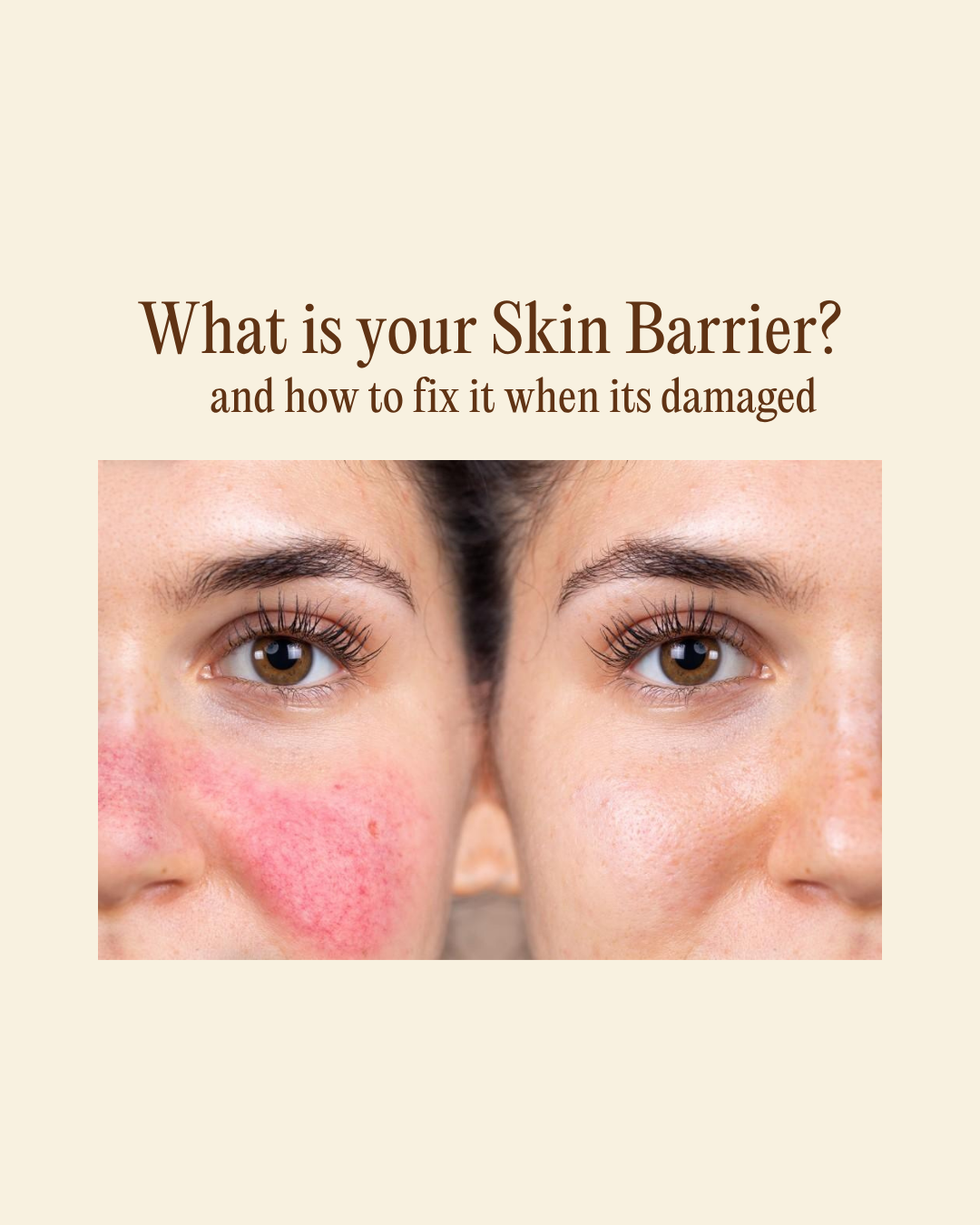
What Is Your Skin Barrier (and how to fix it when it's damaged) 🦠
If your skin has been feeling tight, reactive, red, or just off lately, there’s a good chance your skin barrier is calling for help. You’ve probably heard the term “barrier repair” floating around on social media, but what does it...
-
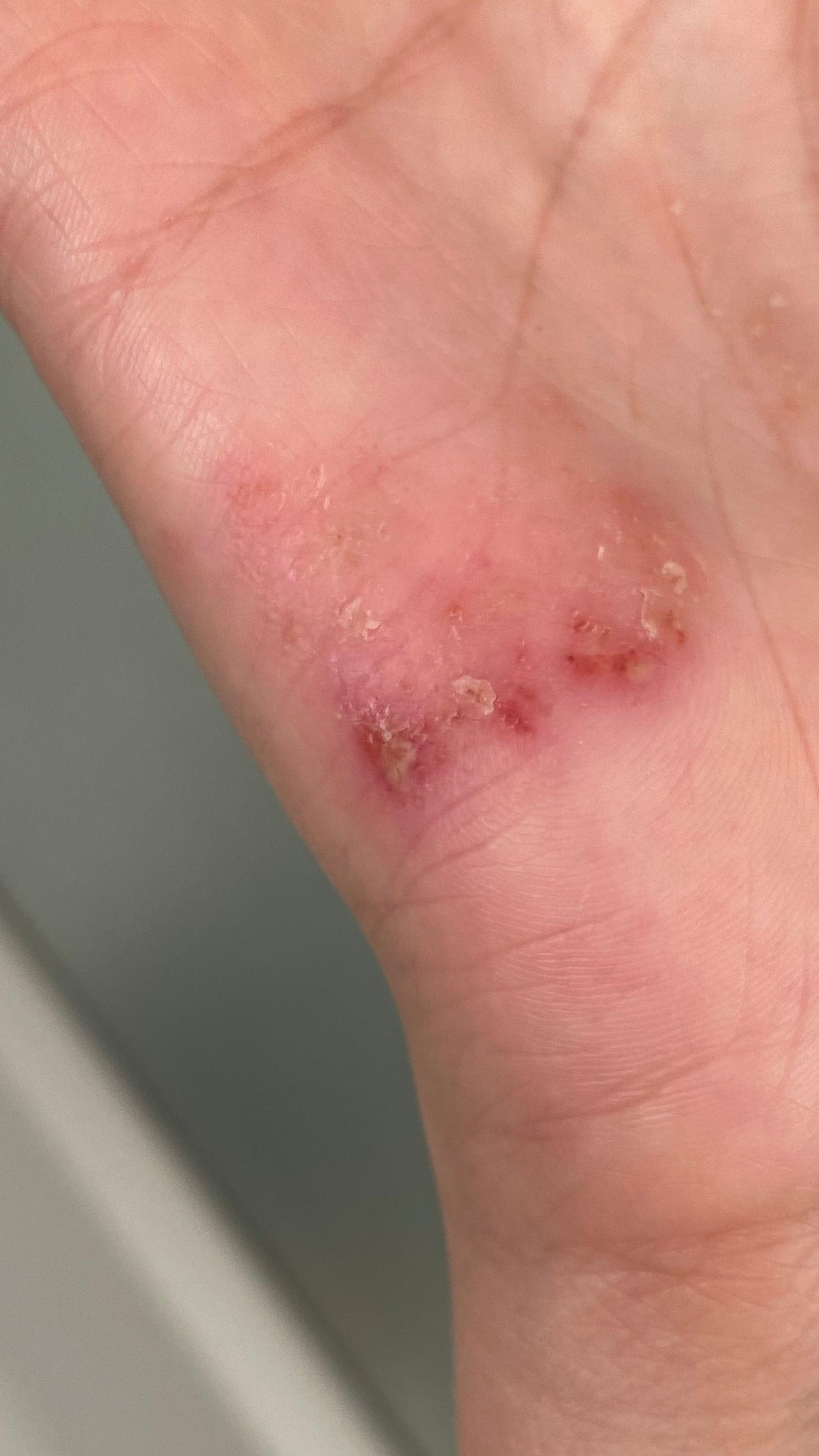
The Balm I Made for My Eczema (And Why You Might Want to Try It Too)
A few days ago, I posted something a little different on Instagram.
No fancy filters. Just me, mid-eczema flare, applying a thick, yellow balm I’d made myself — a blend of zinc oxide and calendula (along with lovely nourishing plant oils and butters) I’ve been quietly testing behind the scenes.
-

AHAs vs BHAs: What’s the Difference and Which One Should You Use?
AHAs (Alpha Hydroxy Acids) are water-soluble acids made from sugary fruits or milk. They work by dissolving the bonds that hold dull, dead skin cells on the surface. This helps reveal smoother, more even-toned skin underneath.

